Space Week 2022 in Fingal Libraries
Ireland’s national Space Week (http://www.spaceweek.ie/) takes place between October 4th to 10th 2022, in parallel with World Space Week. The theme is ‘Our Planet, Our Space, Our Time’. Space Week is coordinated by MTU Blackrock Castle Observatory and is supported by Science Foundation Ireland (SFI; https://www.sfi.ie/) and the European Space Education Resource Office (ESERO; https://esero.ie/).
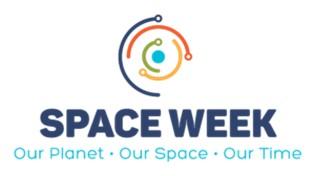
Space Week 2022 is taking place at an exciting time for space exploration, as NASA launches its Artemis Moon mission, with input from teams of scientists from around the world (https://www.nasa.gov/specials/artemis-i/). A major goal of the Artemis mission is to land astronauts at the lunar south pole by the end of 2025, including the first woman and the first person of colour to land on the moon (https://www.nature.com/articles/d41586-022-01253-6).
The Artemis mission is named after the Greek goddess of the moon and twin sister of Apollo; the Apollo program was responsible for sending astronauts to the moon for the first time, including the famous Apollo 11 mission on which Neil Armstrong and Buzz Aldrin walked on the lunar surface on July 20th, 1969. The Artemis program aims to build on the Apollo missions using a mega-rocket, called the Space Launch System (SLS) from which will be launched the Orion spacecraft (https://www.nature.com/articles/d41586-022-02293-8). Success for the Artemis program should lead to scientific advances in understanding both the moon itself and the Solar System. A variety of scientific experiments will also be carried on board. Goals of the mission include mapping of ice on the moon and examining the effects of radiation on living organisms such as yeast, and on two ‘female’ mannequins named Zohar and Helga. In an experiment led by the German Aerospace Center, Zohar and Helga will be on board the Orion capsule and fly around the moon. They will have radiation monitors in their artificial organs, to help study how radiation affects the human body, especially women. Artemis has already faced technical challenges, including delays in the initial Artemis 1 launch, an uncrewed mission which aims to demonstrate the Orion systems in spaceflight conditions and establish that safe re-entry, descent, splashdown, and recovery can be achieved. A successful completion of Artemis 1 is intended to pave the way for the future Artemis 2 mission, in which astronauts will perform a lunar flyby test on board Orion and ultimately the Artemis 3 mission, which will see the first crewed moon landing in fifty years.
Here in Fingal Libraries, we have a wealth of books to help children learn all about space. You can reserve them from our online catalogue to pick up at your local library branch. We have picked a few examples to get you started.
Space explorers: 25 extraordinary stories of space exploration and adventure
By Libby Jackson
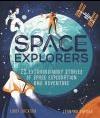
Twenty-five true stories of space exploration are brought to life in this beautifully illustrated book, including how Buzz Aldrin helped save the Apollo 11 mission by using a felt-tip pen to fix a broken circuit breaker, and the NASA ‘human computers’ such as Katherine Johnson whose mathematical genius made space travel possible. The book is aimed at children aged about 9-11 years.
Space technology: landers, space tourism, and more
By John Wood
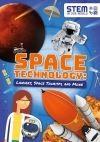
This book from the ‘STEM in our world’ series is aimed at children aged about 8 - 11 years. It examines the high-tech developments driving space study and exploration today and shows how a future in which people could become ‘space tourists’ may be more achievable than we might think.
Chris Hadfield and the International Space Station
By Andrew Langley
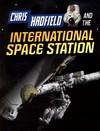
This book is aimed at children aged about 9 to 12 years and gives an insight into the life of the famous astronaut Chris Hadfield, including the six months that he has spent in space. It also describes the training regime for astronauts, as well as the uses of the International Space Station.
By Tracey Turner
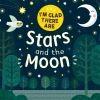
This book is from the ‘I’m glad there are…’ series. This series is aimed at children from six years up and encourages appreciation of the natural world. In this book, children learn about the night sky, including our Solar System, shooting stars and the International Space Station.
Outer space
By Izzi Howell
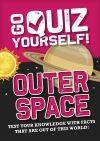
This book, aimed at children from age 8 and up, is part of the ‘Go quiz yourself’ series. It is packed with fast facts on a wide range of space-related topics, from black holes to the Solar System and from asteroids to the Moon landings. Each chapter includes a short quiz, perfect for children who are learning about space in school or who are simply interested in the wonders of space.
By James Olstein
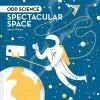
Part of the ‘Odd Science’ series, this book includes weird and wonderful facts about space that you might not find elsewhere. Illustrated in a quirky style by the author, it covers facts such as how it is impossible to cry in space due to the lack of gravity, that there are tortoises in orbit around the moon, and that there are Martian rocks on Earth.
Astronomy for kids: how to explore outer space with binoculars, a telescope, or just your eyes!
By Bruce Betts (foreword by Erica Colon)
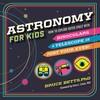
This book opens up the possibilities for exploring space simply by looking up at the night sky! Children can use the book to help them identify many objects including the Milky Way, planets of the Solar System including Mars, and the features of the Moon, among many others. Thirty sights that can be identified just by using the naked eye are included, as well as twenty-five sights that can be better viewed using binoculars or a basic telescope. The book, aimed at children aged between 7-13 years, includes clear illustrations, as well as pointers on use of astronomy equipment.
The ultimate interplanetary travel guide: a futuristic journey through the cosmos
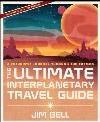
By Jim Bell
This large format, beautifully illustrated book takes you on an interplanetary voyage where you can learn about features of all the planets of our Solar System as well as near-Earth asteroids, for example the Valles Marineris, the ‘Grand Canyon’ of Mars, the aurora borealis of Jupiter, or Enceladus and the icy moons of Saturn. Also featured are exoplanets, which are planets in other solar systems, such as the system of seven planets orbiting the TRAPPIST-1 red dwarf star, about 40 light-years away from our Solar System. The book is aimed at children aged about 10 years and up and features a series of beautiful NASA/JPL-Caltech posters.
- Marie Therese Walsh, Fingal Library HQ.